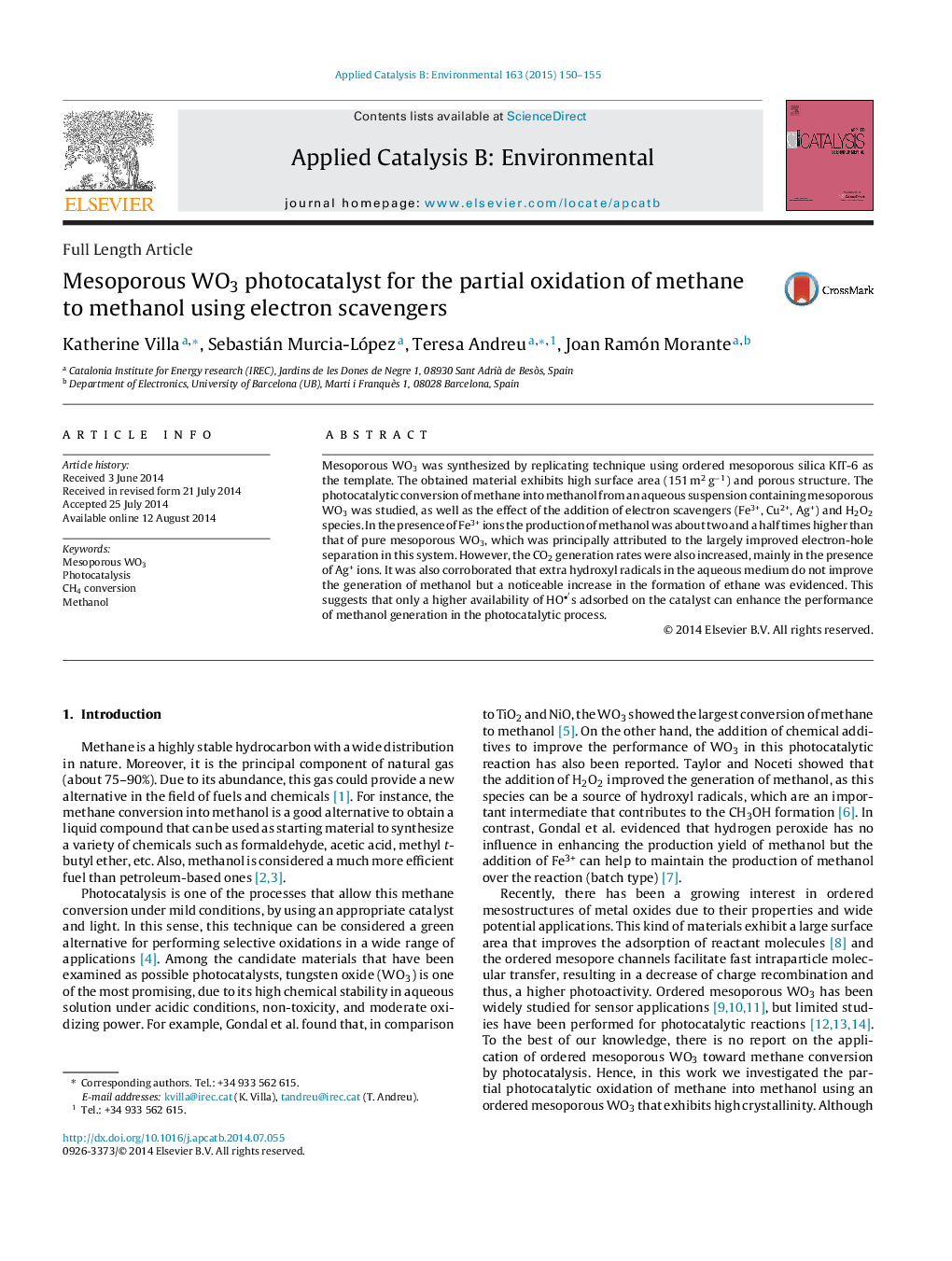| Article ID | Journal | Published Year | Pages | File Type |
|---|---|---|---|---|
| 44866 | Applied Catalysis B: Environmental | 2015 | 6 Pages |
•Photocatalytic conversion of CH4 over mesoporous WO3 was studied.•WO3/Fe3+ and WO3/Cu2+ showed improved photocatalytic activity compared to pure WO3.•Enhanced photocatalytic activity was due to low recombination of e− and h+.•The self-reduction of WO3 was observed by in situ DRIFTS spectroscopy.•A route of ethane formation was proposed based on the roles of Fe, Cu, Ag and H2O2.
Mesoporous WO3 was synthesized by replicating technique using ordered mesoporous silica KIT-6 as the template. The obtained material exhibits high surface area (151 m2 g−1) and porous structure. The photocatalytic conversion of methane into methanol from an aqueous suspension containing mesoporous WO3 was studied, as well as the effect of the addition of electron scavengers (Fe3+, Cu2+, Ag+) and H2O2 species. In the presence of Fe3+ ions the production of methanol was about two and a half times higher than that of pure mesoporous WO3, which was principally attributed to the largely improved electron-hole separation in this system. However, the CO2 generation rates were also increased, mainly in the presence of Ag+ ions. It was also corroborated that extra hydroxyl radicals in the aqueous medium do not improve the generation of methanol but a noticeable increase in the formation of ethane was evidenced. This suggests that only a higher availability of HO•’s adsorbed on the catalyst can enhance the performance of methanol generation in the photocatalytic process.
Graphical abstractFigure optionsDownload full-size imageDownload as PowerPoint slide
